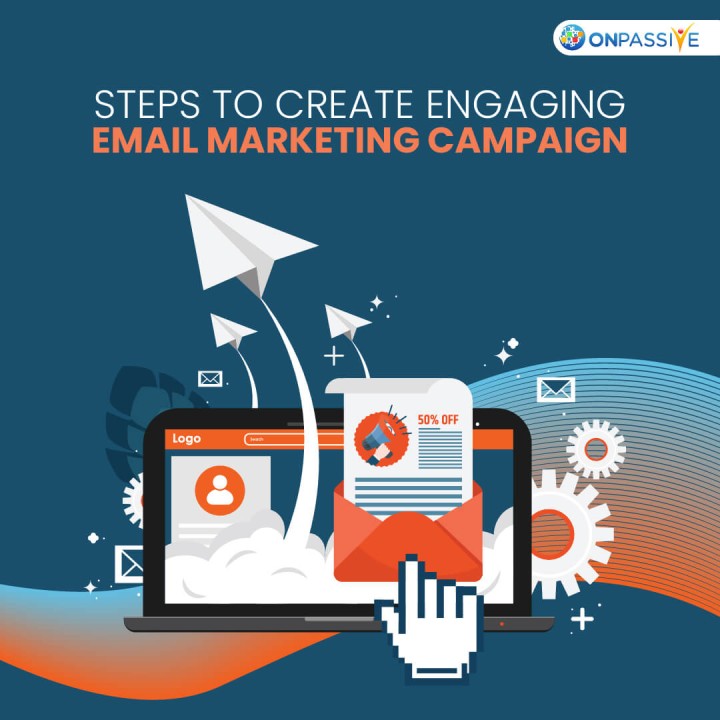Introduction:
In today’s digital age, email marketing remains one of the most effective tools for reaching and engaging with customers. Whether you’re a small business owner, marketer, or entrepreneur, mastering the art of email marketing can help you grow your audience, drive conversions, and build lasting relationships with your subscribers. In this extensive guide, we’ll delve deep into the intricacies of creating an email marketing campaign, providing you with a step-by-step roadmap to success.
Understanding Email Marketing:
Email marketing is a digital marketing strategy that involves sending targeted messages to a group of subscribers via email. These messages can include promotional offers, product updates, newsletters, event invitations, and more. Email marketing allows businesses to communicate directly with their audience, deliver personalized content, and drive engagement and conversions.
Key Benefits of Email Marketing:
Before diving into the process of creating an email marketing campaign, let’s explore some of the key benefits:
- Cost-Effective: Email marketing is a cost-effective way to reach a large audience. Compared to traditional marketing channels like print or TV ads, email marketing requires minimal investment and can deliver impressive returns.
- Targeted Messaging: With email marketing, you can segment your audience based on factors like demographics, purchase history, and engagement level. This allows you to send highly targeted messages that resonate with specific groups of subscribers.
- Measurable Results: Email marketing platforms provide valuable insights into campaign performance, including open rates, click-through rates, and conversion rates. This data allows you to track the effectiveness of your campaigns and make data-driven decisions to optimize future efforts.
- Automation: Many email marketing platforms offer automation features that allow you to set up automated email sequences based on triggers like sign-ups, purchases, or website activity. Automation saves time and allows you to deliver timely, relevant messages to your subscribers.
Creating an Email Marketing Campaign:
Now, let’s explore the step-by-step process of creating an email marketing campaign:
Step 1: Define Your Goals and Objectives:
Before you begin, it’s essential to define the goals and objectives of your email marketing campaign. Are you looking to drive sales, increase brand awareness, or promote a new product or service? Clearly defining your goals will help guide your strategy and measure the success of your campaign.
Step 2: Build Your Email List:
Next, you’ll need to build your email list by collecting email addresses from interested subscribers. You can do this through various methods, including website sign-up forms, social media promotions, and offline events. Be sure to obtain permission from subscribers before adding them to your list to comply with anti-spam laws.
Step 3: Choose an Email Marketing Platform:
Choose an email marketing platform that suits your needs and budget. Popular options include Mailchimp, Constant Contact, and Sendinblue. These platforms offer a range of features, including email templates, list segmentation, automation, and analytics.
Step 4: Create Compelling Content:
Craft compelling content that resonates with your audience and aligns with your campaign goals. This could include promotional offers, product updates, educational content, or engaging stories. Use attention-grabbing subject lines and personalize your messages to increase open rates and engagement.
Step 5: Design Your Email:
Use the email marketing platform’s drag-and-drop editor to design your email. Choose a responsive template that looks great on both desktop and mobile devices. Include eye-catching images, clear calls-to-action, and persuasive copy that encourages recipients to take action.
Step 6: Test and Preview:
Before sending your email, be sure to test and preview it to ensure it looks great and functions correctly. Most email marketing platforms offer testing tools that allow you to preview your email across different email clients and devices.
Step 7: Schedule or Send Your Email:
Once you’re happy with your email, it’s time to schedule or send it to your subscribers. Choose the best time and day to maximize open rates and engagement. Many email marketing platforms also offer advanced scheduling options, allowing you to send emails at optimal times based on recipient time zones.
Step 8: Track and Analyze Results:
After sending your email, track and analyze the results to measure the success of your campaign. Pay attention to metrics like open rates, click-through rates, and conversion rates. Use this data to identify areas for improvement and optimize future campaigns.
Best Practices for Email Marketing Success:
To maximize the effectiveness of your email marketing campaigns, consider the following best practices:
- Segment Your Audience: Segment your email list based on factors like demographics, interests, and purchase history to send targeted, relevant messages.
- Personalize Your Emails: Use merge tags to personalize your emails with recipients’ names, locations, or past interactions with your brand. Personalization increases engagement and conversion rates.
- Optimize for Mobile: Ensure your emails are mobile-friendly and responsive to provide a seamless experience for recipients accessing them on smartphones and tablets.
- Test and Iterate: Continuously test different elements of your emails, such as subject lines, content, and calls-to-action, to identify what resonates best with your audience.
- Stay Compliant: Familiarize yourself with email marketing laws and regulations, such as the CAN-SPAM Act, and ensure your campaigns comply with them.
Conclusion:
In conclusion, creating an email marketing campaign is a powerful way to engage with your audience, drive conversions, and build brand loyalty. By following the step-by-step process outlined in this guide and implementing best practices for success, you can create email campaigns that deliver results and contribute to the growth and success of your business. So dive into email marketing today, unlock the full potential of this versatile tool, and watch your business thrive in the digital age.
